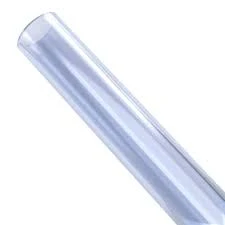Nov . 17, 2024 05:45 Back to list
hdpe irrigation pipe
Understanding HDPE Irrigation Pipes A Sustainable Solution for Modern Agriculture
In recent years, the agricultural sector has undergone a significant transformation, driven by the need for efficient water management and sustainable farming practices. One of the most impactful innovations in this field is the use of High-Density Polyethylene (HDPE) irrigation pipes. These pipes have gained popularity due to their unique properties, durability, and economic benefits, making them an essential component in modern irrigation systems.
What is HDPE?
High-Density Polyethylene, commonly referred to as HDPE, is a thermoplastic polymer made from petroleum. It is known for its high strength-to-density ratio, which gives it excellent toughness and resistance to impact. HDPE is chemically resistant, does not corrode, and is highly durable, making it an ideal material for various applications, including irrigation.
Advantages of HDPE Irrigation Pipes
1. Longevity and Durability HDPE pipes have a long lifespan, often exceeding 50 years with proper installation and maintenance. Their resistance to environmental stressors, such as UV radiation and chemical exposure, allows farmers to invest in a long-term irrigation solution.
2. Flexibility and Lightweight Unlike traditional materials, HDPE pipes are lightweight and flexible, making them easy to handle and install. This adaptability reduces the labor costs associated with installation and allows for quick adjustments in the layout of irrigation systems.
3. Cost-Effectiveness Although the initial investment may be slightly higher than conventional materials, HDPE pipes offer significant savings over time. Their durability means fewer replacements, and their smooth inner walls reduce friction loss, leading to lower energy costs for pumping.
4. Environmental Benefits As the world grapples with climate change and water scarcity, the use of HDPE irrigation pipes aligns with sustainable agricultural practices. They help reduce water wastage by providing efficient water delivery systems, ensuring that crops receive the optimal amount of irrigation.
hdpe irrigation pipe

5. Resistance to Biofilm Growth One of the common challenges in irrigation systems is the growth of biofilms, which can clog pipes and disrupt water flow. HDPE has a smooth surface that minimizes biofilm adhesion, reducing maintenance needs and ensuring consistent water delivery.
Applications of HDPE Irrigation Pipes
HDPE irrigation pipes are employed in various agricultural applications, including drip irrigation, sprinkler systems, and surface irrigation. Their versatility allows farmers to implement tailored irrigation solutions that suit their specific crop needs and local climatic conditions.
1. Drip Irrigation This method involves delivering water directly to the plant's root zone, minimizing evaporation and runoff. HDPE pipes ensure precise control of water flow, enhancing the efficiency of water usage in vineyards, orchards, and high-value crops.
2. Sprinkler Systems HDPE pipes are commonly used in overhead sprinkler systems, providing even water distribution across fields. This method is particularly beneficial for large agricultural operations requiring extensive coverage.
3. Surface Irrigation For traditional surface irrigation practices, HDPE pipes can help create efficient ditches and channels that manage water flow, ensuring that crops receive adequate irrigation while minimizing water loss.
Conclusion
As agricultural practices continue to evolve in response to environmental challenges, the adoption of HDPE irrigation pipes represents a forward-thinking approach to sustainable farming. Their numerous advantages, ranging from cost-effectiveness and durability to environmental benefits, make them an essential component of modern irrigation systems. By transitioning to HDPE solutions, farmers can enhance their productivity while conserving vital water resources, ultimately contributing to a more sustainable agricultural future. As we look ahead, the integration of advanced materials like HDPE will undoubtedly play a vital role in addressing the complexities of modern agricultural demands.
-
High-Quality PPR Pipes and Fittings Durable ERA PPR & PVC PPR Solutions
NewsJul.08,2025
-
Black HDPE Cutting Board - Durable, Non-Porous & Food Safe HDPE Plastic Cutting Board
NewsJul.08,2025
-
High-Quality CPVC Panel Durable HDPE & PVC Panels Supplier
NewsJul.08,2025
-
Double PE Welding Rod Supplier - High Strength, Durable & Versatile Welding Solutions
NewsJul.07,2025
-
High-Quality PVC-O Pipe Supplier Durable 75mm PVC Pipe & Connections Leading PVC Pipe Company
NewsJul.07,2025
-
HDPE Drainage Pipe Supplier – Durable & Corrosion-Resistant Solutions
NewsJul.06,2025

